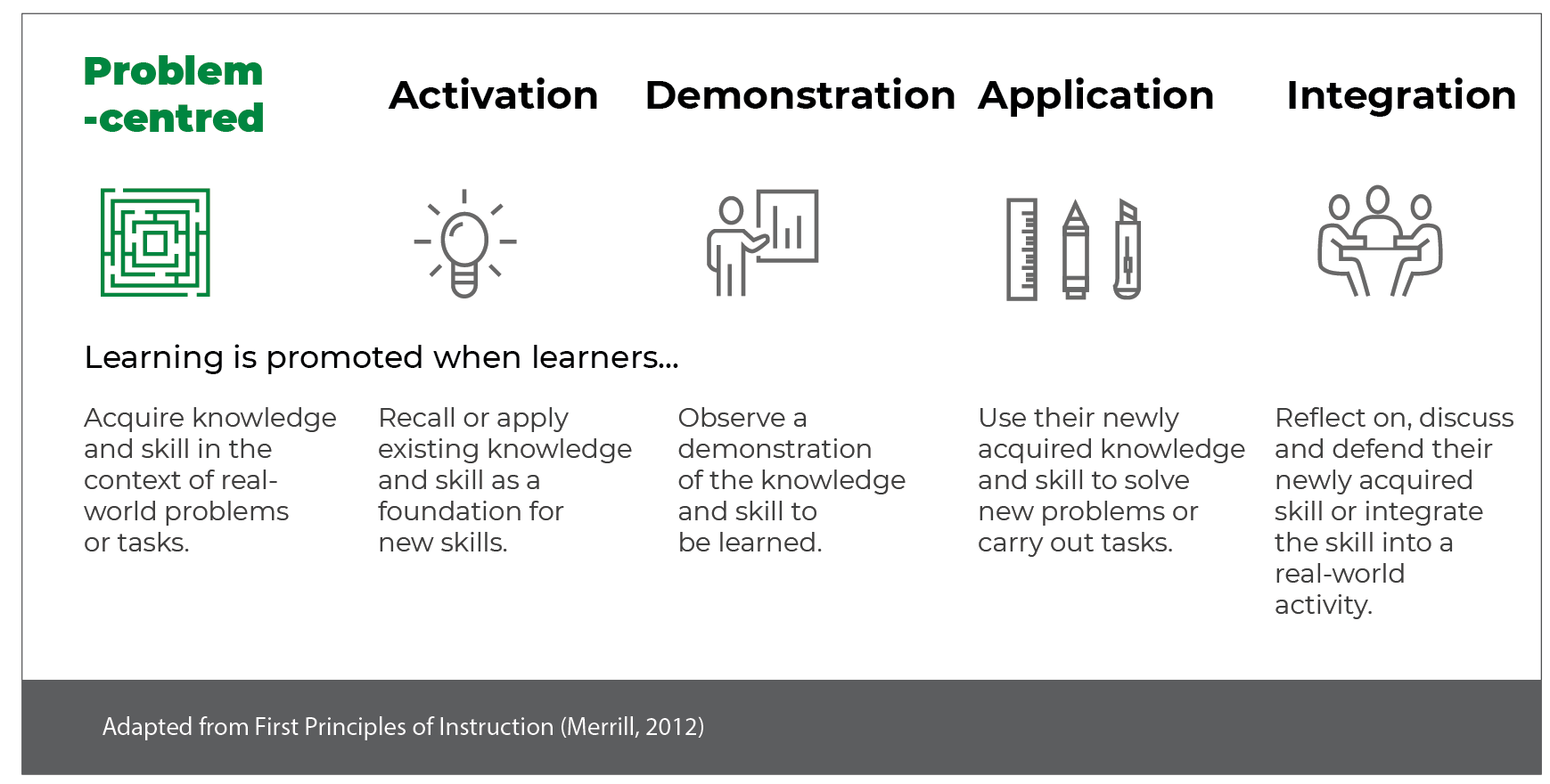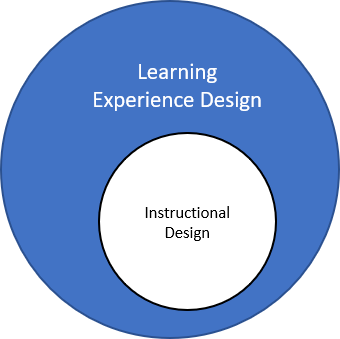
Learn How LXD And Instructional Design Influence Each Other
There is no end to learning and no dearth of content. Are you a medical student, or a geography student, or for that matter, a literature student? You may not even be a student but just a curious learner. Knowledge can be acquired in a multitude of ways, for example, watching a video, listening to a podcast, following a guided simulation, self-explanatory images, or a combination of these. Individually or in combination, these give a learner an enriching learning experience.
What Is Learning Experience Design (LXD)?
Creating learning experiences is a way of helping the learner achieve the desired results. Is it the same as Instructional Design? No.
The primary focus when designing a learning experience is on the learner—how the learner is expected to approach a course and what they would be taking from it. The designer steps into the shoes of the learner and formulates the design of the course, keeping in mind the needs and requirements of the learner. The approach here is learner-centric.
Designing a learning experience is influenced by and also influences Instructional Design and User Experience Design (UXD).
Learning Experience Design And User Experience Design
Before we discuss the relation between LXD and UXD, it would be worthwhile to understand what UXD is.
In the context of a physical product, User Experience Design is all about the design of the product with respect to its usability for the user. It encompasses aspects like acquisition, integration, branding, designing, appearance, and functionality. When we apply this to a digital product, like an online course experience, it will include not only the content of the course but the look and feel of the course as a whole, along with the User Interface Design.
It is important to note here that the User Interface is a part of the User Experience Design and not another name for it. Another important factor to be taken into consideration is the platform. Designing a digital product means keeping in mind the fact that a user may use any of the multiple platforms available to access the product. So, when a simple thing like an informational website is designed, it has to be made compatible with viewing on a computer, tablet, and phone. The operating system compatibility should not be forgotten here.
Where Do LXD And UXD Cross Paths?
As we mentioned earlier, these are interdependent. Creating a learning experience for a user requires designing a course that is accessible to the user, irrespective of the device and the operating system being used. Since the learner is the user of the course, which is the « product, » User Experience also needs to be taken into account.
In terms of a website, Jesse James Garrett, in his book The Elements of User Experience, lists 5 elements of User Experience Design.
These elements are:
- Surface
This is the visual design of the website; its look and feel. - Skeleton
This includes information, interface, and navigation design. - Structure
On the software front, the interaction design defines how the system responds to the user’s needs while on the information front, it refers to the arrangement of content within the information space. - Scope
On the software side are the functional specifications that give a detailed description of the product’s features. The scope here is translated into the content requirements of the website. - Strategy
The goal is to adopt a strategy that fulfills user needs.
Garrett’s elements can also be put to use when designing a learning experience. A designer will seek answers to questions like the following:
- What will be the visual design of the course?
- How much and in what manner will the content be displayed? This can include on-screen text and audio.
- What instructional approaches (ILT, eLearning, 3D, AR/VR) will be used?
- How will the user navigate within the course?
- Is the course accessible to users across platforms?
The UXD of a digital course will consist of the appearance of the screens (fonts, colors, placing of elements, images used, etc.), functionality, interactivity, and the method of presentation (2D/3D animation).
Implementing Learning Experience Design
Broadly speaking, what is the normal path we follow when creating any digital course?
- Study the content
- Consult a Subject Matter Expert (SME)
- Create a course outline, including tasks like knowledge checks
- Script storyboards as per the outline
- Design and develop the course
In the entire process of creating a digital course, the learner is not considered at any point. It all depends upon what the SME considers appropriate in terms of content and the use of the best possible options in terms of graphic and tech integration. The task set for the learner is of primary concern. This is the basic approach of an Instructional Designer.
Learning content, however, is created for a learner. Any content can be said to be effective if it benefits the learner and helps them acquire knowledge. One way to do this is by following Merrill’s First Principles of Instruction.

According to Merrill’s principles, a learner is able to grasp a concept or piece of knowledge when it is presented to them in context with a real-world problem or task. The primary goal should be to enable the learner to solve a complete problem or task in a real-world situation.
Teaching concepts in isolation can lead to a learner being lost and not able to follow the content. To prevent such a situation, it is important to activate the existing knowledge base and build upon it. For example, when teaching a medical student about the functioning of a heart, it would be beneficial to activate the knowledge related to the basic structure and parts of the organ.
Taking the same example of the heart, merely describing a heart will not produce effective learning content. To bring about clarity of understanding, a demonstration can play a significant role. To achieve this, a mix of methods can be applied, like images and audio-visual aids.
For learning retention, application plays an important role. When teaching the process for performing surgery, a mere demonstration will not suffice. The knowledge can be applied by following a guided simulation or by performing the procedure on a virtual human.
When trying to solve a problem in a lifelike situation, one can come across a set of problems or obstacles. How does the learner get answers to these questions? The solution lies in integration. By designing collaborating activities, instant feedback, peer discussions, debates, etc., a holistic learning experience can be achieved.
Learning Journey Mapping
Based on Merrill’s First Principles of Instruction, we follow a course creation method which we call Learning Journey Mapping.
Every course has a set of objectives, and for the completion of these objectives, content can be presented to a learner in a variety of ways. With the content on hand, we try to map a learning journey for the learner. This involves seeking answers to some basic questions related to demonstration, application, activation, and integration.
- What type of demonstration would be ideal for the course?
It could be Instructor-Led videos, self-paced eLearning courses, 3D animated videos to explain complex processes, infographics for process flow visualization, 2D animations for better retention—all depending on the content and target audience. - Which application would be best suited for the given content?
This can range from anything like 3D interactive training to AR/VR/MR/XR immersive experiences or 2D game-based learning. There are multiple options. - What activation methods would fulfill the purpose?
This could include a thorough recapitulation of learning through Instructor-Led videos, survey questions, or pre-course assessments to check the existing level of knowledge. - How to apply integration methods to the learning content?
This can be done through case studies, scenario-based practices, a course-wide knowledge check, and by enabling knowledge exchange between learners and instructors through an online community.
A given task has to go through these four decision-making phases after which the skeleton of the course is prepared.

Learning Experience Design is a new concept on the horizon, and the approach to creating courses is changing. The principles of Instructional Design are being absorbed by Learning Experience Design. If we were to look at the two as Venn Diagrams, Instructional Design would be a circle within the Learning Experience Design circle.

This does not mean that Instructional Design is obsolete and outdated and should be replaced by LXD. Content, no doubt, is the meat of any course, be it digital or classroom. But content alone is not enough to help the learner learn better. To get a learner to understand a concept, it is important to give them a holistic learning experience.
Applying the principles of Instructional Design, we can present the content in proper learning chunks with learner-friendly language and knowledge testing methods. To ensure better understanding and retention, an environment of experience will have to be created.
A course designer can look into factors like the following:
- Use of medium
Content can be presented in text format, audio, video, or a combination of the three. - Use of device
A designer can have no control over the device a user uses to access a course. In such circumstances, every course needs to be designed so that the device choice does not hamper course functionalities. - Use of platform
With multiple platforms available in the market, experience designers have to be on their toes and design courses that run on all major platforms. Incompatibility of a platform will mean inaccessibility. - User groups
When designing a course, a designer needs to take into consideration the learning experience to be offered for the disabled also.
Focusing on the learning experience rather than just the task at hand is what the integration of Learning Experience Design and Instructional Design is all about.
Learning can take place anywhere. It need not be within the four walls of a classroom with a teacher delivering a lecture. One can be sitting out in the open, in a crowded public place, and still learn something. It is the experience that helps you learn and, more importantly, retain the learning.

